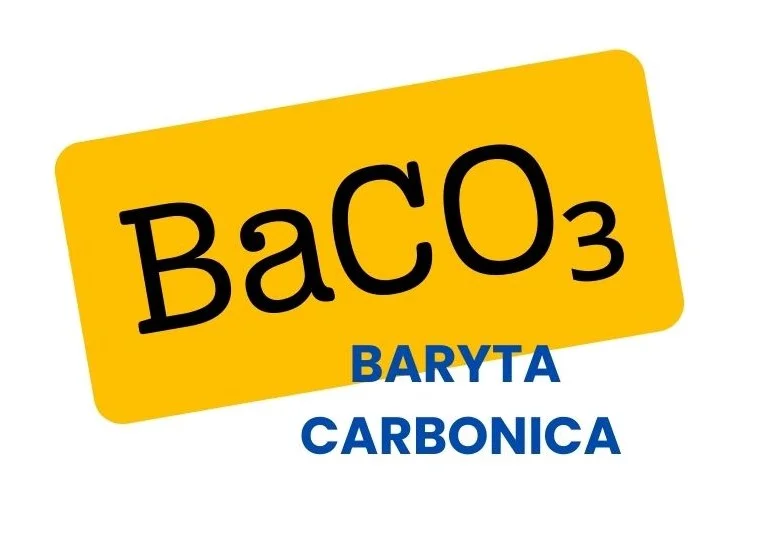Baryta Carbonica is fully proved and constitutional remedy. It is deep-seated, long-lasting medicine and it especially suits to those who are at the extremes of life, i.e. infants and old people.
Table of Contents
ToggleSOURCE INFORMATION
Prover- Dr. HAHNEMANN
Barium carbonate, the source material for Baryta carbonica, is a chemical compound composed of barium (Ba), carbon (C), and oxygen (O) atoms. Its chemical formula is BaCO₃.
Composition
- Barium (Ba): Barium is a metallic element with the atomic number 56 and the chemical symbol Ba. It belongs to the alkaline earth metal group in the periodic table.
- Carbon (C): Carbon is a non-metallic element with the atomic number 6 and the chemical symbol C. It is a fundamental building block of organic compounds.
- Oxygen (O): Oxygen is a non-metallic element with the atomic number 8 and the chemical symbol O. It is essential for respiration and combustion processes.
Natural Occurrence
- Barium carbonate occurs naturally as the mineral witherite, which is a rare mineral found in hydrothermal veins and sedimentary rock formations.
- It can also be produced artificially through chemical processes by reacting barium sulphide or barium chloride with sodium carbonate or sodium bicarbonate.
Physical Properties
- Barium carbonate typically appears as a white powder or crystalline solid.
- It is insoluble in water but soluble in acids.
- The compound has a high melting point of around 1740°C (3164°F).
- It has various industrial applications, including its use in the production of glass, ceramics, bricks, rat poison, and as a component in fireworks.
Chemical Structure
- Barium carbonate is formed when one barium ion (Ba₂⁺) combines with one carbonate ion (CO₃) to create a neutral compound, BaCO₃.
- The chemical structure of barium carbonate consists of one barium atom bonded to one carbonate group, which comprises one carbon atom and three oxygen atoms.
Toxicity
- Barium carbonate is toxic if ingested in large quantities, as it can interfere with various physiological processes in the body.
- Chronic exposure to barium compounds, including barium carbonate, can lead to barium poisoning, which affects the nervous system, muscles, heart, and gastrointestinal tract.
Regulatory Status
- Due to its toxicity, the use of barium carbonate is regulated in various industries to minimize human exposure and environmental contamination.
- Safety measures are implemented during its production, handling, and disposal to prevent adverse health effects and environmental pollution.

CLINICAL APPLICATION
Baryta carbonica is indicated for various clinical conditions such as aneurysm, apoplexy, alimentary issues, brain disorders, dwarfism, foot sweat, glandular swelling, hemorrhoids, heart problems, high blood pressure, defective memory, quinsy, tonsillitis, and more.
SPHERES OF ACTION
It affects various systems and organs in the body, including nutrition, glands, throat, prostate, heart, blood vessels, and nerves.
PATHOGENESIS
- In infancy, it induces degenerative changes, particularly affecting the glandular system, leading to inflammation and hypertrophy.
- In old age, it acts on the muscular coat of the heart and blood vessels, resulting in arteriosclerosis.
- This leads to thickening of blood vessels and hemorrhages, contributing to elevated blood pressure, especially in elderly men.
CONSTITUTION
Makeup of the body: Individuals requiring Baryta Carbonica often appear dwarfish, mentally deficient, and physically weak and short.
In children, there is a characteristic presentation resembling cretinism, with short stature, a swollen abdomen, a puffy face, enlarged glands, thick lips, and an idiotic appearance.
Elderly individuals may be weak, fatty, but exhibit childish behavior.
WHAT IS CONSTITUTION IN HOMOEOPATHY?
Temperament: These individuals typically have a melancholic temperament, characterized by a tendency towards sadness or depression.
Relation with heat and cold: Baryta Carbonica patients tend to feel chilly, showing a preference for warmth and discomfort in cold environments.
Miasm: The psoric miasm is often present in the background, indicating a predisposition to chronic diseases with skin manifestations.
Diathesis: There is a tendency towards tubercular and scrofulous diathesis, suggesting a susceptibility to conditions involving glandular swelling and inflammation, as well as tuberculosis.
GUIDING SYMPTOMS
- Dwarfishness: Baryta carbonica individuals typically exhibit both mental and physical dwarfishness, indicating a lack of growth or development in both aspects.
- Susceptibility to Colds: Those who easily catch colds, with each cold settling in the throat, leading to conditions such as sore throat, tonsillitis, and quinsy, find relief with Baryta carbonica.
- Glandular Affections: Baryta carbonica is indicated for swelling, hardening, or early suppuration of glands, including cervical and inguinal glands.
- Elderly Diseases: Often used for diseases common in old age, such as enlarged prostate and hardened testes, as well as premature impotence. It is also beneficial for elderly individuals exhibiting childish behavior, whether with or without idiocy.
- Baldness and Sexual Issues: Effective for baldness in young individuals, particularly if the scalp is sensitive to touch. It also addresses sexual issues like frequent nocturnal emissions with painful erections (chordee).
- Hysterical Women: Baryta carbonica is helpful for hysterical women who exhibit dwarfish characteristics and experience scanty menstrual flow.
- Muscular Twitching and Sleep Disorders: Individuals may experience muscle twitching during sleep and may talk in their sleep, indicating a disturbance in their sleep patterns.
- Ailments from Emotions and Suppressed Foot-Sweat: Conditions aggravated by emotional stress or the suppression of foot sweat are often alleviated by Baryta carbonica.
PARTICULARS
PSYCHOLOGICAL BACKGROUND
- Dependence and Anxiety: Baryta carbonica individuals rely heavily on others for support, feeling incapable of taking on responsibilities or making decisions on their own.
- This dependency leads to anticipatory anxiety and fear of losing the support they rely on, often manifesting as a delusion that a loved one is sick or dying.
- Responsibility and Work Ethic: Despite their dependency, Baryta carbonica individuals can be hardworking and responsible, especially in family matters.
- They are meticulous and methodical but lack creativity and resist change, preferring routine and avoiding anything that draws attention to them.
- Social Shyness and Fears: Many Baryta carbonica individuals recall being extremely shy in childhood, struggling to make friends and feeling criticized or laughed at.
- They have childish fears and easily become anxious over trivial matters, such as noises or minor changes.
- Simplicity and Credulity: Baryta carbonica individuals exhibit a certain simplicity and naivety, being rather credulous and easily influenced by others.
- Mind Symptoms: Mentally, Baryta carbonica individuals may appear idiotic or foolish, with memory loss and mental weakness.
- They lack confidence, are easily irritated and inattentive, and often experience dread of men and society.
- They may imagine being ridiculed or criticized and exhibit childish behaviours like throwing stones at strangers.
- Physical Characteristics in Babies: Baryta carbonica babies appear dwarfish with stunted growth, a swollen abdomen, and a puffed face.
- They are chilly and prone to catching colds easily. Their mental development is delayed, and they struggle to learn basic skills like walking.
- Babies may avoid play, exhibit unusual behaviours, and suffer from enlarged glands, especially inflamed tonsils leading to frequent bouts of tonsillitis and digestive issues like diarrhea and vomiting.
GASTROINTESTINAL TRACT
MOUTH
- Foul odour from the buccal cavity
- Dryness of mouth, especially in the morning
- Vesicles inside the cheeks and mouth
- Saliva runs out of the mouth during sleep
- Patient may not notice the intolerable stench from their own mouth
TEETH
- Weakness in teeth after eating, making chewing difficult
- Toothache in decayed teeth, often exacerbated before menses or from exposure to cold
- Toothache worsens when the patient thinks about it but disappears when the mind is diverted.
THROAT
- Causative factors: Tonsillitis due to suppression of foot sweat, cold drinks, and cold air
- Character of throat affection: Cold settles in the throat frequently; inflamed tonsils with engorged veins; swollen glands in the neck
- Smarting sensation in the throat when swallowing; sore throat to touch
- Enlarged tonsils prone to suppuration, especially on the right side
- Palate and uvula may also be swollen
- Aggravation on swallowing solids and when dwelling on troubles
- Concomitant sensation of a plug in the throat, leading to quinsy Stomach:
- Eructations as if fire were forcing its way through the stomach, causing soreness
- Sour eructations occurring a few hours after eating
- Nausea, palpitation, and anxiety in the morning
- Pressure in the stomach after eating, with a sensation of soreness relieved by eructation
RESPIRATORY SYMPTOMS
NOSE
- Coryza in children with a large abdomen
- Frequent nosebleeds
- Sneezing causes concussive pain in the brain
COUGH
- Chronic cough in scrofulous children with swollen glands and enlarged tonsils
- Exacerbated after slight exertion, especially in the presence of strangers
- Aggravation in the evening, midnight, lying on the left side, during active motion, ascending, stooping, in cold air, by thinking about it, and after eating
- Concomitant sensation of soreness and a plug in the chest while coughing
CARDIOVASCULAR SYSTEM
- Tachycardia; patient feels the heart beating rapidly
- Palpitation and distress when lying on the left side, accompanied by restlessness and irritability
- Feeling of soreness in the region of the heart
- Pulse is full and hard
- Presence of atheroma and aneurysm
- Aggravation when dwelling on troubles
GENERAL MODALITIES
Aggravation
- When sitting
- After menses
- When thinking of ailments
- Lying on the painful side
- Washing affected parts
Amelioration
- Walking in open air
RELATIONS WITH OTHER MEDICINES
Antidoted by: Antimonium tartaricum, Belladonna, Camphor, Mercurius
Complementary to
- Conium, Mercurius
- Before or after: Sulphur, Tuberculinum, Dulcamara, Silica, Psorinum
After Baryta Carb.: Psorinum is effective in eradicating the tendency to quinsy.
Similar to: Alumina, Calcarea iodide, Dulcamara, Fluoric acid, Iodum, Silicea
Incompatible with: Calcarea carbonica, Calcarea
Comparison with: Digitalis, Radium, Aragallus, Oxytrop, Astragalus
Antidote for poisonous doses: Epsom salts
DOSAGE
- Baryta carbonica is typically prescribed in potencies ranging from the third to the thirtieth.
- Higher potencies, such as the thirtieth, are often used to address the underlying predisposition to conditions like quinsy.
- Baryta carbonica may act slowly and requires repetition of dosage to achieve desired therapeutic effects.
Frequently Asked Questions
What is Baryta carbonica and what conditions does it treat?
- Baryta carbonica is a homeopathic remedy made from barium carbonate.
- It is commonly used to address various conditions such as tonsillitis, sore throat, glandular swellings, high blood pressure, heart problems, and mental deficiencies in individuals at the extremes of life, particularly infants and elderly people.
What are the key characteristics of Baryta carbonica?
- Baryta carbonica is indicated for individuals who exhibit physical and mental dwarfishness, susceptibility to colds, glandular swellings, and ailments associated with old age.
- It is also helpful for individuals with baldness, sexual issues, muscle twitching, and sleep disorders.
How does Baryta carbonica affect the gastrointestinal tract?
- Baryta carbonica can cause various gastrointestinal symptoms such as foul odour from the mouth, dryness of the mouth, toothache, tonsillitis, sore throat, eructation, and nausea.
- It is often indicated for conditions aggravated by emotional stress or suppression of foot sweat.
What are the psychological characteristics associated with Baryta carbonica?
- Individuals requiring Baryta carbonica may exhibit dependence, anxiety, responsibility, social shyness, simplicity, and credulity.
- They may also experience mental symptoms such as memory loss, lack of confidence, irritability, and childish behaviours.
What are the general modalities of Baryta carbonica?
- Symptoms of Baryta carbonica are typically aggravated when sitting, after menses, when thinking of ailments, and lying on the painful side. They are ameliorated by walking in open air.
Meaning of Difficult Words
- Dwarfishness: The condition of being unusually small or undersized, often used metaphorically to describe mental or intellectual immaturity.
- Glandular: Relating to or affecting the glands, which are organs that produce and release substances such as hormones and enzymes.
- Anticipatory Anxiety: Anxiety or nervousness experienced in anticipation of a future event or situation.
- Credulous: Tending to believe things too readily or accepting of claims without sufficient evidence.
- Scrofulous: Relating to or affected by scrofula, a form of tuberculosis affecting the lymph nodes, especially in the neck, causing them to swell.
- Quinsy: A severe form of tonsillitis characterized by the collection of pus behind the tonsils, causing swelling and severe pain on swallowing.
- Atheroma: Fatty deposits or plaques that develop within the walls of blood vessels, leading to atherosclerosis.
- Aneurysm: A localized, abnormal dilation or ballooning of a blood vessel, typically an artery, due to weakness in the vessel wall.













Leave a Reply